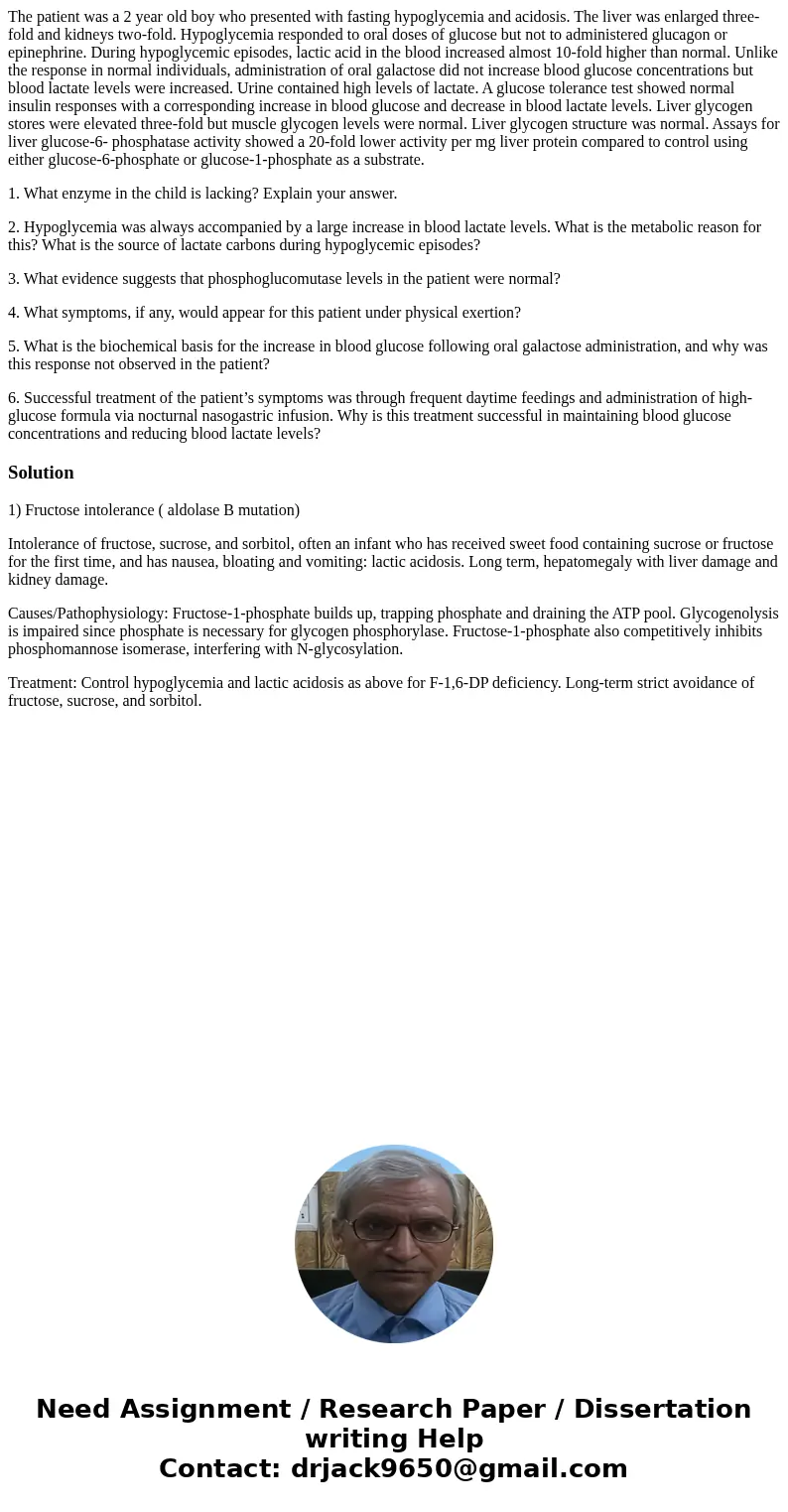The patient was a 2 year old boy who presented with fasting
The patient was a 2 year old boy who presented with fasting hypoglycemia and acidosis. The liver was enlarged three-fold and kidneys two-fold. Hypoglycemia responded to oral doses of glucose but not to administered glucagon or epinephrine. During hypoglycemic episodes, lactic acid in the blood increased almost 10-fold higher than normal. Unlike the response in normal individuals, administration of oral galactose did not increase blood glucose concentrations but blood lactate levels were increased. Urine contained high levels of lactate. A glucose tolerance test showed normal insulin responses with a corresponding increase in blood glucose and decrease in blood lactate levels. Liver glycogen stores were elevated three-fold but muscle glycogen levels were normal. Liver glycogen structure was normal. Assays for liver glucose-6- phosphatase activity showed a 20-fold lower activity per mg liver protein compared to control using either glucose-6-phosphate or glucose-1-phosphate as a substrate.
1. What enzyme in the child is lacking? Explain your answer.
2. Hypoglycemia was always accompanied by a large increase in blood lactate levels. What is the metabolic reason for this? What is the source of lactate carbons during hypoglycemic episodes?
3. What evidence suggests that phosphoglucomutase levels in the patient were normal?
4. What symptoms, if any, would appear for this patient under physical exertion?
5. What is the biochemical basis for the increase in blood glucose following oral galactose administration, and why was this response not observed in the patient?
6. Successful treatment of the patient’s symptoms was through frequent daytime feedings and administration of high-glucose formula via nocturnal nasogastric infusion. Why is this treatment successful in maintaining blood glucose concentrations and reducing blood lactate levels?
Solution
1) Fructose intolerance ( aldolase B mutation)
Intolerance of fructose, sucrose, and sorbitol, often an infant who has received sweet food containing sucrose or fructose for the first time, and has nausea, bloating and vomiting: lactic acidosis. Long term, hepatomegaly with liver damage and kidney damage.
Causes/Pathophysiology: Fructose-1-phosphate builds up, trapping phosphate and draining the ATP pool. Glycogenolysis is impaired since phosphate is necessary for glycogen phosphorylase. Fructose-1-phosphate also competitively inhibits phosphomannose isomerase, interfering with N-glycosylation.
Treatment: Control hypoglycemia and lactic acidosis as above for F-1,6-DP deficiency. Long-term strict avoidance of fructose, sucrose, and sorbitol.

 Homework Sourse
Homework Sourse